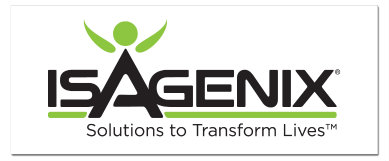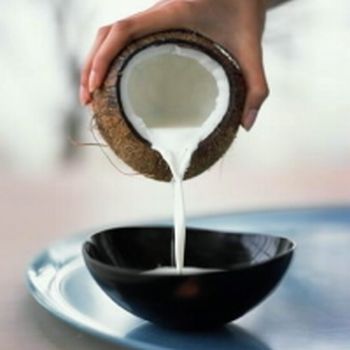Craniosacral Therapy
A gentle form of manipulation, craniosacral therapy is a hands-on healing technique typically practiced by physical therapists, massage therapists, and chiropractors. Craniosacral therapists manipulate the craniosacral system, which includes the soft tissue and bones of the head (cranium), the spine down to its tail end (the sacral area), and the pelvis. They also work with the membranes that surround these bones and the cerebrospinal fluid that bathes the brain and spinal cord. Although the therapist uses a touch so light that many patients don't even notice it, most people report feeling profoundly relaxed after a treatment.
Unlike many alternative modalities, craniosacral therapy claims no ancient or exotic origins. It was discovered in the 1930s by William Garner Sutherland, an American osteopath and disciple of Andrew Taylor Still, the founder of osteopathy. Sutherland devoted nearly 20 years to exploring the concept that the bones of the skull are designed and formed to allow for movement.
While Sutherland's theories were dismissed for years by the medical and scientific community, they were revived in the 1970s by osteopathic physician John E. Upledger. With a team of scientists at Michigan State University, Upledger set out to confirm the existence of cranial bone motion. Though still considered inconclusive by many, Dr. Upledger's research (along with that done by European and Russian researchers) has inspired a new generation of practitioners to embrace the therapy.
By law, craniosacral therapists are not allowed to make a medical diagnosis, therefore the technique should not be confused with cranial osteopathy, a diagnostic and therapeutic method of treatment that has similar tenets but is practiced by highly trained osteopathic physicians and surgeons, as well as some dentists.
How Does Craniosacral Therapy Work?
Craniosacral therapists believe that the movement of spinal fluid within and around the central nervous system creates a vital body rhythm, no less important to health and well-being than the heartbeat or the breath.
Health problems develop, they contend, when blockages occur. Traumatic injuries, ligament or joint strains, or dysfunctions in other parts of the body may cause these blockages. Such disturbances then prevent the skull, the spine, and the membranes encasing the brain and the spinal cord from expanding and contracting to accommodate the natural ebb and flow of cerebrospinal fluid. This ebb and flow is called the cranial rhythmic impulse. Practitioners assert that craniosacral therapy reestablishes the normal flow of fluids and thus restores health.
Health Benefits of Craniosacral Therapy?
Cerebrospinal fluid bathes the brain and central nervous system in a rich mixture of proteins, electrolytes, amino acids, and other essential nutrients. When the craniosacral system is properly aligned, proponents say, the central nervous system can efficiently deliver these substances to the rest of the body.
By clearing blockages, craniosacral therapy may help to:
- Boost general well being
- Reduce stress
- Improve the quality of sleep
- Increase energy
- Enhance the functioning of all the body's organs.
Although no significant clinical trials have tested these claims, anecdotal reports from patients describe considerable success for craniosacral therapy in the treatment of a wide variety of common ailments, including headaches, dizziness, tinnitus, and sinusitis.
What Can I Expect From Craniosacral Therapy?
In a typical session, the practitioner will ask the patient, who may be clothed or wearing a gown, to lie face up or down on a specially designed table. Lightly laying hands on various parts of the body, particularly the skull, the spine, and the pelvis, the practitioner "palpates," or feels, each area, sensing movement and looking for fluctuations in the cranial rhythmic impulse.
The practitioner then manipulates the bones and soft tissue to clear blockages and correct the flow of cerebrospinal fluid so it is smooth and even. A session usually lasts from 20 minutes to an hour. Some minor health problems, such as tension headache, may be resolved in one session. More complex conditions, such as migraines and chronic sinusitis, usually require several weekly sessions.
Cautions about Craniosacral Therapy
- While there have been few reports of injuries from craniosacral therapy, critics express concern that any manipulation could do harm to the delicate, pliable skull bones of newborn infants.
- Proponents argue that this technique is one of the safest alternative therapies, extremely gentle and noninvasive when practiced by a qualified physician.
- If you have ever had a brain hemorrhage or aneurysm, check with your doctor before you have craniosacral therapy. It may be ill-advised.
- This therapy is not recommended for such life-threatening problems as heart disease, cancer, or medical emergencies.
Choosing a Craniosacral Therapy Practitioner
Practitioners of craniosacral therapy are most likely to be physical or massage therapists or chiropractors. Look for a practitioner who has special training in the craniosacral method. If your problem is severe, you may want to consult a doctor of osteopathy (D.O.) who has trained in this discipline. Craniosacral therapy may be covered by some insurance plans if it is received from a physical therapist or chiropractor.
A note about this therapy for infants and children:
One controversial area of craniosacral therapy is its use in treating children. Many practitioners contend that infants and young children respond particularly well to this therapy because the bones of their skulls are more mobile than they will be in adulthood. They maintain that early intervention can permanently correct distortions of the skull or spine caused by a difficult birth. In addition, anecdotal reports suggest craniosacral therapy may be helpful for newborn colic and childhood ear infections.
If you are considering this therapy for a child, consult only a doctor of osteopathy (not a therapist) who specializes in the craniosacral method for children.




